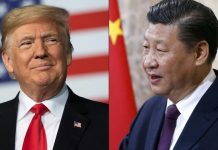The U.S. Navy, U.S. Marine Corps, Armed Forces of the Philippines, and allies began the eighth iteration of Exercise Sama Sama near Subic Bay in the Republic of the Philippines on October 7.
This marked the beginning of a two-week maritime exercise aimed at enhancing interoperability and strengthening security partnerships among regional allies, the official announcement indicated.
As a component of the Cooperation Afloat Readiness and Training (CARAT) series, Sama Sama 2024 expands the maritime collaboration legacy by offering land and sea phases of operations.
Almost a thousand are participating in this year’s high-intensity drills, which are named “Sama Sama,” which means unity. The exercises are focused on anti-submarine, anti-surface, and anti-air warfare.
“This exercise has evolved significantly since its inception. What began as a bilateral event between the United States and the Philippines has grown into a multilateral and multiplatform operation, bringing together like-minded partners from across the Indo-Pacific,” said the U.S. Head of Delegation, Rear Adm. Todd Cimicata, Commander Logistics Western Pacific, and Task Force 73.
The Tagalog phrase “Sama Sama,” which means “togetherness,” captures the essence of the long-standing alliance in the region. Australia, Canada, France, and Japan will participate in the continuous series of exercises, reflecting a sustained commitment to enhancing regional collaboration.
In recent times, the Philippines has participated in several multi-national drills and patrols in what appears to be a sustained effort to build resilience and deterrence against an aggressive China.

Rear Admiral Todd Cimicata of the US Navy told reporters that forging alliances with important allies has a “deterrent effect,” although he clarified that the exercises were not directed towards any particular nation. “The intent of these exercises is not to ruffle feathers. It’s tailored for interoperability,” Cimicata said. “Across the gamut, there are people that don’t follow those rules so we have to agree so that we can set those standards.”
The nine-day exercises will include the US Navy’s Arleigh Burke-class guided-missile destroyer USS Howard, Canada’s Halifax-class frigate HMCS Vancouver and CH-148 Cyclone helicopter, Japan’s ForceShin Maywa US-2 amphibious aircraft and Kawasaki P-1 maritime patrol aircraft, along with warships from the Philippines.
The drills come during intensified belligerence by Chinese forces in the South China Sea. Late last month, for instance, a Chinese Navy missile boat directed a military-grade laser at a Philippine aircraft over the South China Sea. The incident was one of the many as Chinese Coast Guard (CCG) personnel continue to harass Filipino soldiers at several disputed features in the region.
China has been accused of ramming their Coast Guard warships into Filipino ships, training water cannons at them, and attacking Filipino crew members. Chinese aircraft have started dangerously intercepting and trailing Philippine aircraft patrolling over the South China Sea recently. Concerns have been raised that an escalation could result in a full-scale confrontation in the region.
Although the United States is motivated by its desire to counter China in the broader Indo-Pacific region, it is also Manila’s treaty ally and obligated to assist in the event of an escalation. Moreover, the exercises are being conducted near Subic Bay, where Manila has been significantly bolstering its presence.
Asian NATO: Why India Does Not Back Japan’s Idea Despite Tensions With China & Alliance With Tokyo?
Subic Bay Continues to Gain Prominence
Subic Bay is on the west coast of the island of Luzon in the Philippines. Situated around 100 kilometers northwest of Manila Bay, near the disputed Scarborough Shoal, it is strategically important for projecting power and monitoring the volatile region.
Earlier, the United States operated its naval base in Subic Bay for about 94 years before finally handing it over to the Philippines’ authorities in the 1990s.
In the wake of China’s increased aggression, Manila opened a facility at Subic Harbor in 2022, near the harbor from the old American installation at the former Hanjin Heavy Industries Shipyard. Before the establishment of the Naval Operating Base Subic, the Philippine Navy had to depend on civilian ports to dock its vessels.
The Philippine Navy disclosed that it has leased a 300-hectare shipyard in Subic Bay, previously owned by Hanjin Heavy Industries, for an annual fee of P1.1 billion since May 2022.
Furthermore, in February of last year, Subic’s Chief of the Subic Bay Metropolitan Authority (SMBA), Rolen Paulino, told Nikkei Asia that Subic’s deep harbor and proximity to the South China Sea made it an ideal location for military operations.

Manila has initiated an extensive enhancement of its infrastructure and military capabilities in response to China’s perceived threat. This strategic development has highlighted the importance of Subic Bay, as the nation is considering developing a new naval base in that area.
In June this year, reports hinted that the Philippines planned to build a military station at Subic Bay. This station aims to improve its capabilities for force projection and aerial reconnaissance in the South China Sea.
At that time, reports noted that the Philippine Air Force’s bidding paperwork and development plans indicated Manila was considering establishing a new forward operating base at Subic Bay airport that could handle attack and surveillance aircraft.
More recently, Philippines Defense Secretary Gilbert Teodoro Jr. stated last month that if everything proceeded according to plan, Subic could once again host a military post that would be larger and more suitable than the area that the Philippine Navy now occupied.
“We have identified an area which is suitable for a main operating base. We have got presidential approval to pursue the process of acquiring the area and we hope to have it completed by the end of 2028. And I think the area to be vacated by the Philippine Navy can be leased out to other locators without any loss of income,” Teodoro said at that time.
- Contact the author at sakshi.tiwari9555 (at) gmail.com
- Follow EurAsian Times on Google News




